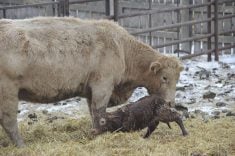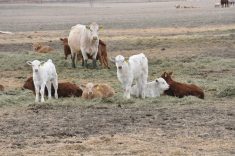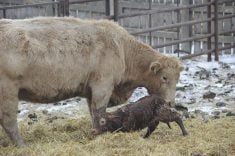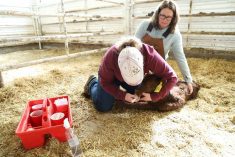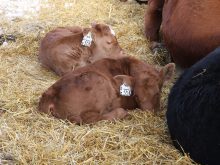Greg Kornfeld says calving cameras do pay off.
He figures he spent about $8,000 on his current camera system three years ago. It includes eight cameras, one outside on a yard light pole and the rest inside different buildings.
“In the purebred business it doesn’t take long to pay for a camera system because I don’t know how many calves we’ve saved that were born completely inside the sac still,” said the Val Marie, Sask., rancher. “They would drown if you don’t get there fast enough to tear the sac off their head. We’ve probably saved over the years easily a dozen calves that would have been most likely dead.”
Read Also

VIDEO: Ag in Motion documentary launches second season
The second season of the the Western Producer’s documentary series about Ag in Motion launched Oct. 8.
He said saving one bull calf that later sells for $10,000 makes the cost worthwhile.
Often producers will say they had calves born dead but Kornfeld doesn’t believe that’s what always happens.
“I would say 99 percent of the time that would not be true. That calf was probably born alive,” he said.
But the cow likely began licking her calf at the wrong end while the sac was still over its head or covering its nose.
“I don’t think people realize that happens more often than not,” Kornfeld said. “Once you get cameras, you see all sorts of things like that. Then it’s a mad dash to the barn through the snow to get there fast enough.”
More ranchers are using cameras these days for peace of mind and better sleep.
Ask on Twitter about camera use and the replies are universally positive, with producers saying the cameras save trips to check only to find out nothing is happening. The cattle aren’t disturbed and the humans are able to go back to sleep easier because they didn’t have to get up, get dressed and go outside in the cold.
Alberta rancher Kent Beaudoin said cameras are “the best thing going.”
“From the calves you save to the million less steps you take,” he said. “You’re able to watch a calf suck for the first time without disturbing the cow. Day or night is perfect.”
Others said they have multiple calving yards so the cameras save trips, and some said they also use the cameras on air cart tanks during spring seeding.
Blair Gardham in Manitoba said he likes to check the cameras on his smartphone from wherever he has cell service.
“Be a toss-up between them and a good maternity pen for best (return on investment),” he said.
Kornfeld said using the app on his cellphone means he can go to the rink, for example, or anywhere with cell service and still keep an eye on the herd.
At home, it’s nicer to stay warm in the house.
“You can fall asleep on the couch and set your alarm on the phone and wake up and check them on the TV screen,” he said.
This is his second camera system. The first he bought about 10 years ago was good but service from the company was poor.
Seven of his eight cameras are infrared and have 360-degree views.
The range is strong; ear tags and freeze brands are easily seen up to 800 metres away. Kornfeld said only strong snowstorms create visibility problems.
They also all have video replay.
The Kornfelds calve about 200 purebred mostly Black Angus cows from Jan. 15 to the end of March and then between 150 and 250 commercial cows beginning in April. Mature cows calve on grass, away from the cameras.
He added many of his neighbours now have cameras, too.
“In the purebred world, if I was guessing, (probably) 75 to 80 percent use cameras now,” he said.






